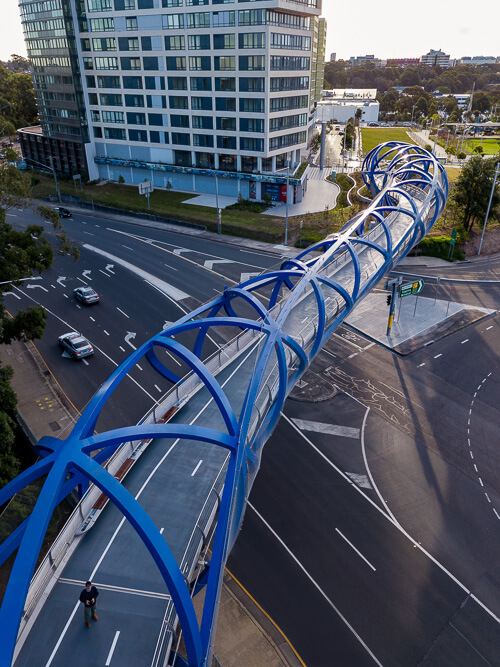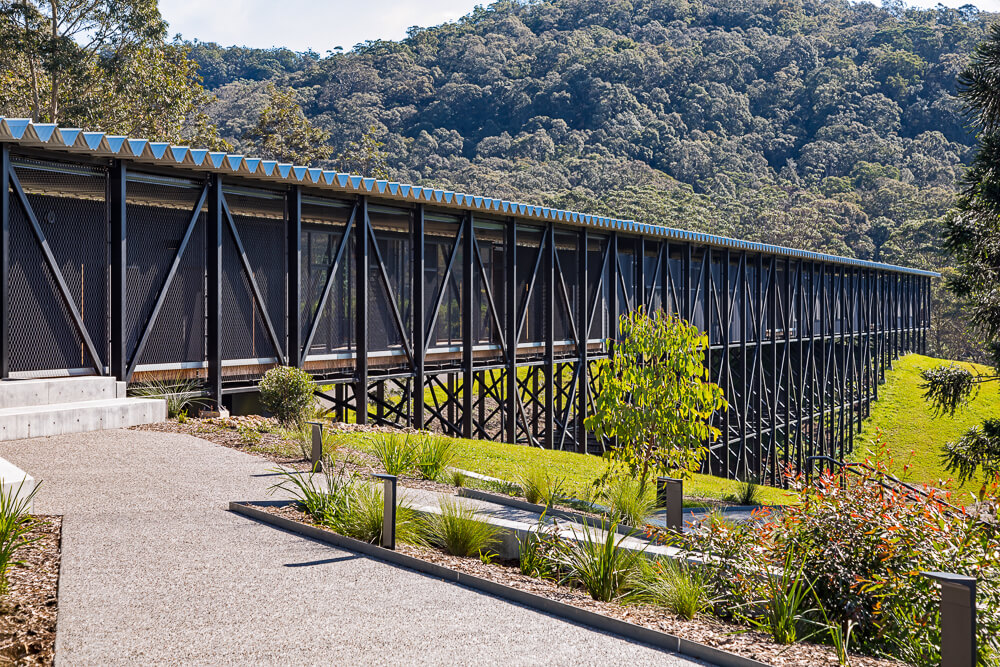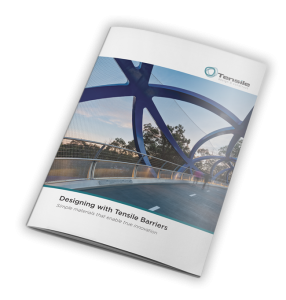For a bridge to be sustainable, it needs to be able to perform for a long time without too much interference, and with minimal impact on the environment.
One way to make a bridge more sustainable is by embedding greater resilience and longevity into the structure.
According to Man-Chung Tang, bridge engineer and writer on bridge sustainability, if a bridge lasts 300 years instead of 100, the environmental impacts are reduced by 66%.
In light of that, here are some of the factors to consider for sustainable bridge design.
Use of structurally efficient materials and methods
Using robust, low-maintenance materials with good longevity can reduce the quantity of material required, as well as the need for later rebuilding and the resources (time, energy, materials, money) that go with it.
The strength embodied in steel for example can result in lower material use, simplification of design, reduced use of equipment and greater durability. Steel is also recyclable.

An example of long-lasting and beautiful steel bridge design is the Christopher Cassaniti bridge (formerly Lachlan’s Line bridge) in Sydney.
The bridge creators used extensive digital modelling in the design process. The efficiencies gained from this enabled them to focus on sustainability through simplified construction and minimal use of materials.
Tensile’s role in this project was to design, engineer and Install the Webnet 40mm aperture stainless steel anti-throw barrier. Webnet is a light and strong mesh material that requires little to no maintenance. It lasts 25 years or more, and is cost-effective, fire-resistant and quick to install – meeting many of the requirements for sustainability.
When it came to installation time, the work done offsite meant the bridge was all ready to go. It was transported and put into position by crane in four sections with the Webnet screen already attached.
Bridge design for flood and bushfire resistance
A structure designed for resistance to natural disasters will also be more resilient and sustainable over the long term.
An example of this is the Bundanon Art Museum & Bridge in Illaroo NSW. Sustainability and flood and bushfire resilience were strongly embedded into the design of this structure, which is part museum and part bridge.
This meant that the architects wanted a barrier for the bridge that would also be sustainable and offer strong resistance to fire and flood.
As for the Cassaniti bridge, we used Webnet for the barrier for Bundanon, in this case made from 1.5mm diameter stainless steel wire formed into 80mm aperture woven mesh.
As well as offering properties of disaster-resilience and sustainability, Webnet is highly transparent, allowing for excellent viewing in safety. This means that visitors to the museum will be able to enjoy the benefits offered by the facility for many decades to come.
Do you have a bridge project in mind that requires a sustainable and resilient safety barrier? Get in touch!






































